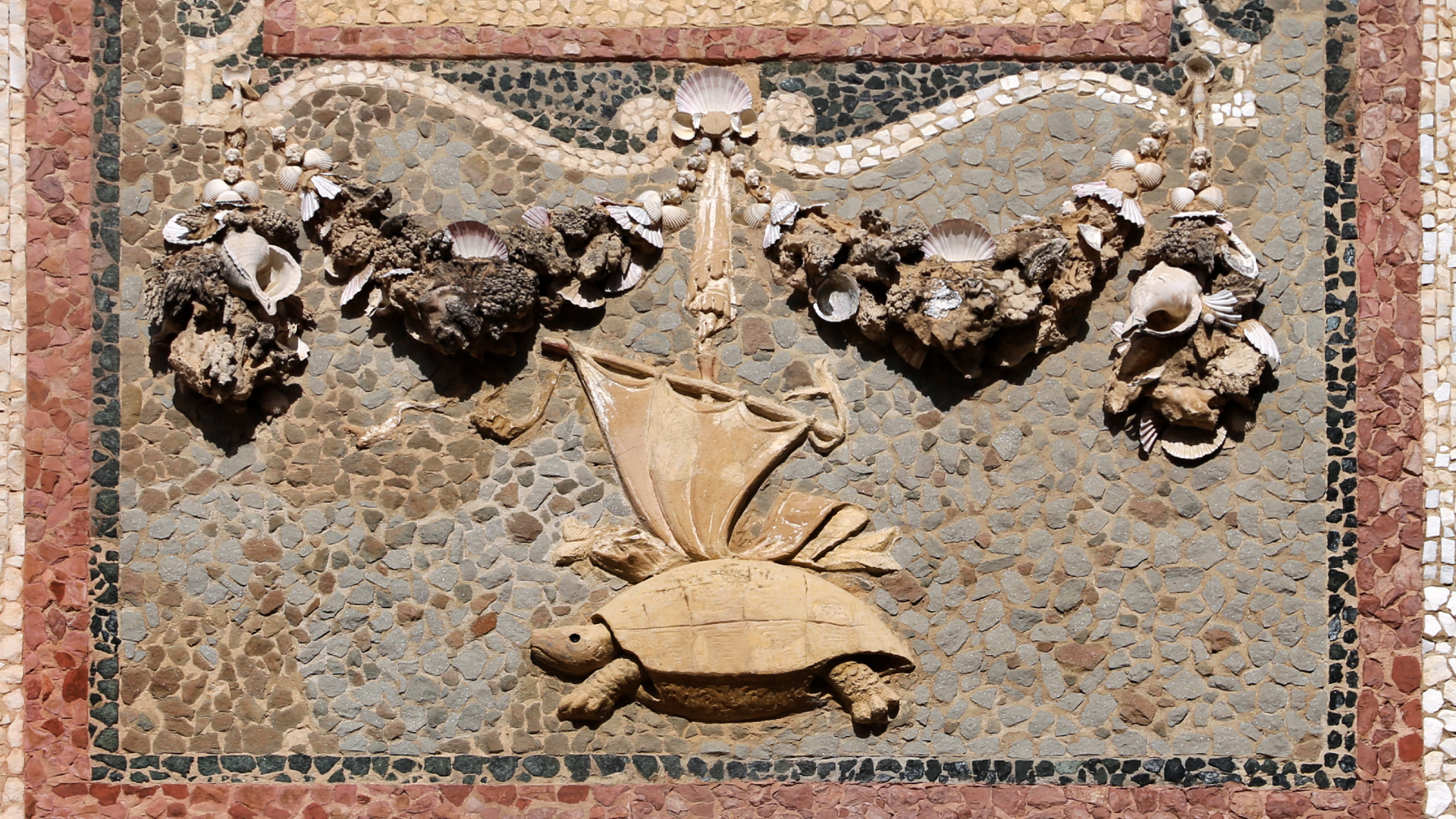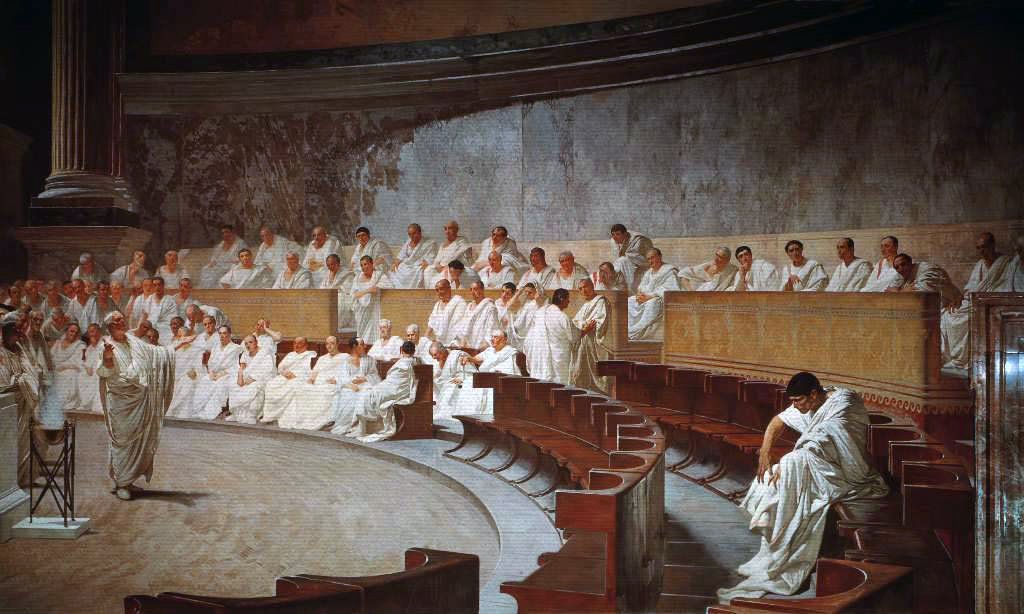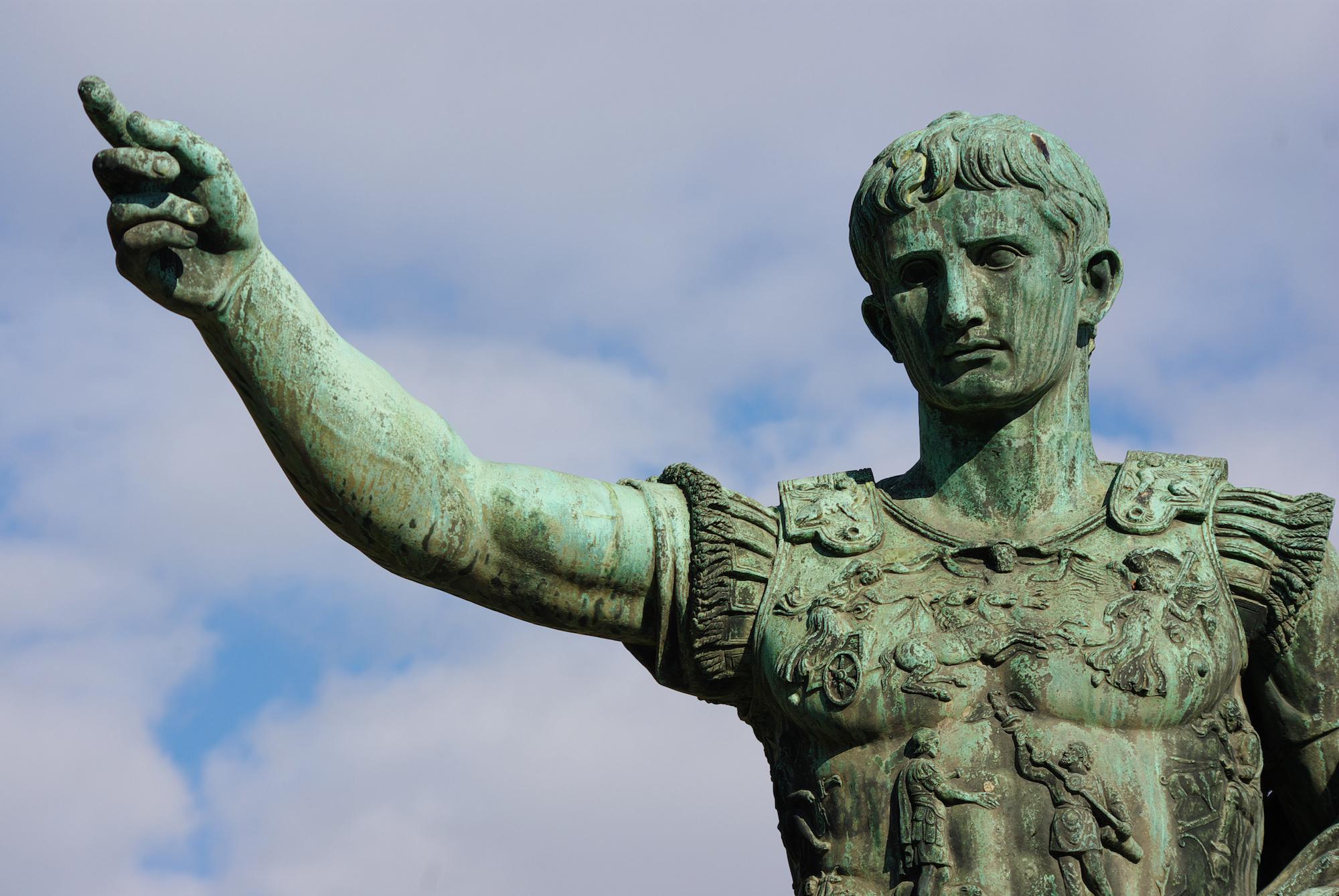Festina lente: A Roman emperor’s guide to getting stuff done

- In our deadline-heavy, always-on culture, it can seem like we’re always rushing to get things done.
- Octavian Caesar Augustus adopted a simple principle to help him solve problems and reach his goals: Festina lente.
- The principle translates to “make haste slowly” and can help us find the balance between the need to meet a deadline and do things well.
Like all historical legacies, the one of Octavian Caesar Augustus is open to interpretation. On the one hand, he steered Rome through tumultuous times and ushered in a centuries-long period of order and stability known as Pax Romana. On the other, he delivered the killing blow to the Roman Republic and established a position so powerful that it gave subsequent emperors such as Caligula and Nero carte blanche to indulge their every whim and notorious excess.
Whatever your take on Caesar Augustus, you’ve got to give him this: The man knew how to get stuff done.
After becoming emperor, Augustus spearheaded a series of projects to tidy up Rome after its many, many civil wars. He expanded its borders through military campaigns to nearly double the empire’s size. He reformed its tax and census systems. He outfitted the city of Rome with a new police force and fire brigade. And he built an extensive network of well-engineered roads and instituted a postal service.
For these accomplishments, after he died in 14 AD, the Roman Senate proclaimed him a god — not an unheard of honor in the ancient world (basically its equivalent to the Nobel Peace Prize).
That’s one heck of a curriculum vitae. He managed all of this not only by being clever, ruthless, and politically savvy, but by following a modest, yet powerful, Roman principle: Festina lente. Translation: “Make haste slowly.”

The history of an august oxymoron
Did I say “Roman principle”? Well, not exactly. Like most things Roman, festina lente is Greek in origin. It’s a calque, or loan translation, of the phrase speûde bradéōs. The Romans simply borrowed it, gave it a Latin polish, and then invoked the time-honored tradition of “no backsies.”
But while Augustus didn’t originate the principle, he did devote himself to it. In a biography of the first Roman emperor, the historian Suetonius describes how Augustus changed the military following the final civil wars in the Republic. He notes how Augustus thought “nothing more derogatory to the character of an accomplished general than precipitancy and rashness.” To quash such impulses, Augustus trained his generals to instead make haste slowly and that “the cautious captain is better than the bold.”
Augustus further signaled his devotion by minting an aureus, a type of gold Roman coin, with his personal branding of festina lente. On the side that didn’t include his face — because what leader isn’t going to slap his visage on some coin? — he imprinted the image of a crab hoisting a butterfly. The butterfly represented speed, the crab caution and deliberateness.
As history rolled on, other men would also adopt festina lente as their slogan. In imitation of Augustus’ crab and butterfly, they too devised emblems sporting peculiar pairings in what became a bizarre kind of European tradition. For example, Aldus Manutius, a Renaissance humanist who revolutionized the publishing industry, adopted festina lente as his business ethos. He incorporated it into his printer’s mark using the image of a dolphin wrapped around an anchor. The dolphin represented speed, the anchor steadiness.

Similarly, Cosimo de’ Medici, the first Grand Duke of Tuscany, illustrated festina lente with a turtle sporting a sail on its carapace. Other combinations have included a snake encircling an arrow, a rabbit wearing a snail shell, and — in an instance flirting with trademark infringement — a dolphin wrapped around a chameleon.
Festina lente: ancient wisdom, modern science
Today, the emblems and Latin phrasing have gone by the wayside, but people’s interest in festina lente has remained steadfast. Moreover, science has backed up Augustus’ martial teachings.
Behavioral science has long recognized the speed-accuracy tradeoff in decision-making — faster responses require sacrificing the information necessary to make informed decisions. That’s as true in other animals as in humans. One neural study in monkeys has even suggested that primate brains fundamentally change how they interpret decisions depending on whether they approach them under “speed stress” or “accuracy stress.”
A similar tradeoff affects not only decision-making but our ability to innovate, too. Research suggests that time pressure hinders creativity and problem-solving by prompting people to reach for the simplest option or solution rather than allowing the space to reach a more eloquent one.

Finding the balance
Of course, history and cultures are filled with adages and proverbs warning against swiftness when making decisions, finding solutions, or pursuing a course of action. The usual suspects here are: “haste makes waste,” “more haste, less speed,” and “slow and steady wins the race.” Even the Bible gets in on the fun: “Desire without knowledge is not good, and whoever makes haste with his feet misses his way” (Proverbs 19:2).
What sets festina lente apart is that it doesn’t ask us to forsake haste entirely. It recognizes that the opposite of haste — whether that means procrastination, over-preparation, or analysis paralysis — can be just as debilitating. Rather, we need to balance speed with thoughtful diligence. Hence, the seeming oxymoron of making haste slowly.
Where is that balance found? For Augustus it’s here: “That is done fast enough, which is done well enough.” In other words, however long it takes you to do something correctly, that’s the fastest you should go. No faster, no slower.
How to make haste slowly
Even with that in mind, we’re still left with how. How do mere plebeians like us adopt festina lente when we lack god-like powers? Because let’s face it, Augustus didn’t roll up his sleeves and pave Rome’s roads himself. (Or whatever a toga’s equivalent of sleeves is — drapes?)
To start, if you can get help, do so. Collaborative problem-solving is receiving increased attention for its ability to help people solve complex problems. Even when the collaborators are mere mortals, they bring together more experiences and a larger knowledge base than any one individual. This pooling of cognitive resources makes for more informed decisions and better problem-solving. Collaborators can also divide the labor among themselves, allowing each to work slowly on their piece while accomplishing the larger task quickly as a group.
If you are looking to make a decision, solve a problem, or complete a project of a more personal nature, research has shown the following strategies can help you harness festina lente.
Don’t procrastinate
The “haste” of “make haste slowly” is not about speed but always making progress toward your goal. Procrastination stymies that progress right away. The reasons people procrastinate will be different for different people, but typically it’s a form of psychological self-protection. If you procrastinate until the last minute and rush to the end, then you enjoy a built-in excuse for why the results didn’t meet expectations.
Augustus’ life bears this out. Though he preached caution over boldness, he fell prey neither to procrastination nor analysis paralysis. After his great uncle Julius Caesar’s assassination, he formed the political coalition necessary to secure his position and keep himself safe. He even allied, albeit briefly, with his adversary Mark Antony.
In short, finding ways to stop procrastinating not only gets you to the finish line sooner: The results are also superior.
Set reasonable deadlines
People often underestimate the time it will take to complete a task, research a decision, or solve a problem. This cognitive bias is known as the planning fallacy. According to psychologists Daniel Kahneman and Amos Tversky, this stems from our tendency to overrate our abilities while simultaneously exaggerating our capacity to control future events.
To compensate, always plan for things to take more time than you think they will, a practice known as time cushioning. Think of how much time it will take to flawlessly execute your plan or reach your decision. Then think of all the things that can go wrong, and pad your schedule accordingly.
“The smartest way to set a reasonable deadline is to make sure it’s not too stressful for those involved, to tailor it individually to all players, and also to break it up,” writes Amy Herman, founder of the Art of Perception, in her book Fixed.
Another strategy, Herman points out, is breaking your larger projects into steps. This allows you to set more appropriate deadlines for each individual step, which makes the larger timeline more realistic and less stressful. It may feel like the project is moving at a glacial pace, but by concentrating on each step in order, you’re moving quicker than if you tried to tackle everything at once.
“It sounds counterintuitive, but if you slow down to speed up, you’re negating the idea that you’re going to have to start all over again because you made a mistake along the way. Mistakes will happen anyway, but if you slow down to think about mistakes as they happen, you’re saving time,” Herman explained in an interview.
Make time for creativity and innovation
Contrary to popular perception, the best way to solve a problem isn’t to pound your head against it until it (or you) ultimately cracks. To make haste slowly, you need to occasionally disengage from the problem.
Research shows that people who take the time to engage in healthy, active habits such as exercise, socializing, and hobbies can engage their executive functions more effectively for self-control, emotional regulation, and, yes, problem-solving. Setting aside a problem to focus on other activities also lets your subconscious workshop it behind the scenes, which research suggests improves your conscious efforts later on.
“Exercisers outperform couch potatoes in tests that measure long-term memory, reasoning, attention, problem-solving, even so-called fluid-intelligence tasks. These tasks test the ability to reason quickly and think abstractly, improvising off previously learned material to solve a new problem. Essentially, exercise improves a whole host of abilities prized in the classroom and at work,” writes John Medina, a developmental molecular biologist at the University of Washington.
Festina lente and you
In adopting these strategies, and developing your own, you can empower festina lente in your work and life. In adopting it, you likely won’t become an emperor and leave a gallery of noseless marble busts for archaeologists to get excited about. (Who needs that kind of pressure anyway?)
But as history has shown, slow haste isn’t just for emperors. Whether you are a publisher, researcher, or even a Duke of Tuscany, this simple principle can help you reach whatever goals you set out to accomplish with grace and poise. Granted, it’s a mite short of godhood, but still worth reaching for.
Learn more on Big Think+
With a diverse library of lessons from the world’s biggest thinkers, Big Think+ helps businesses get smarter, faster. To access Big Think+ for your organization, request a demo.





